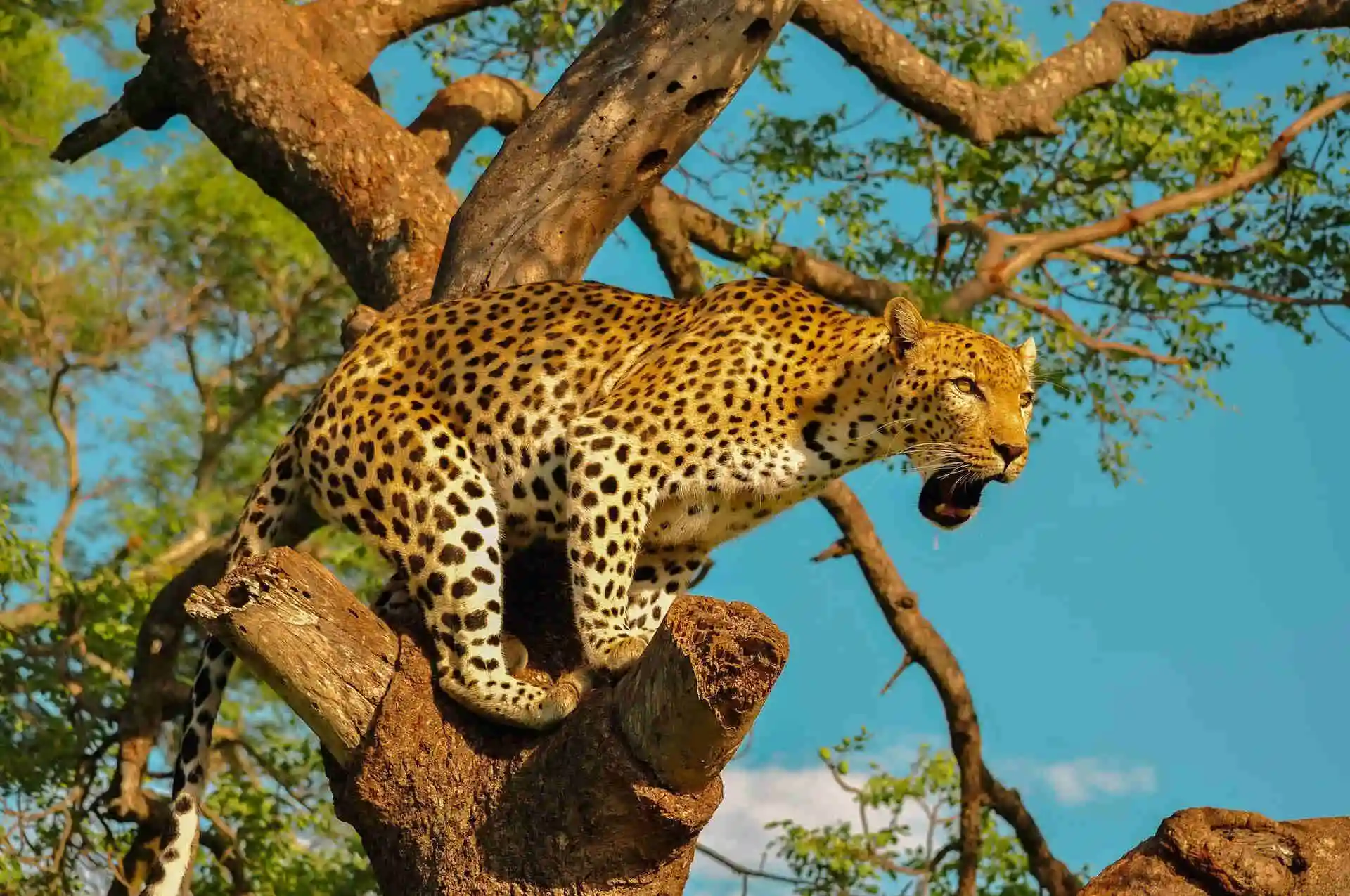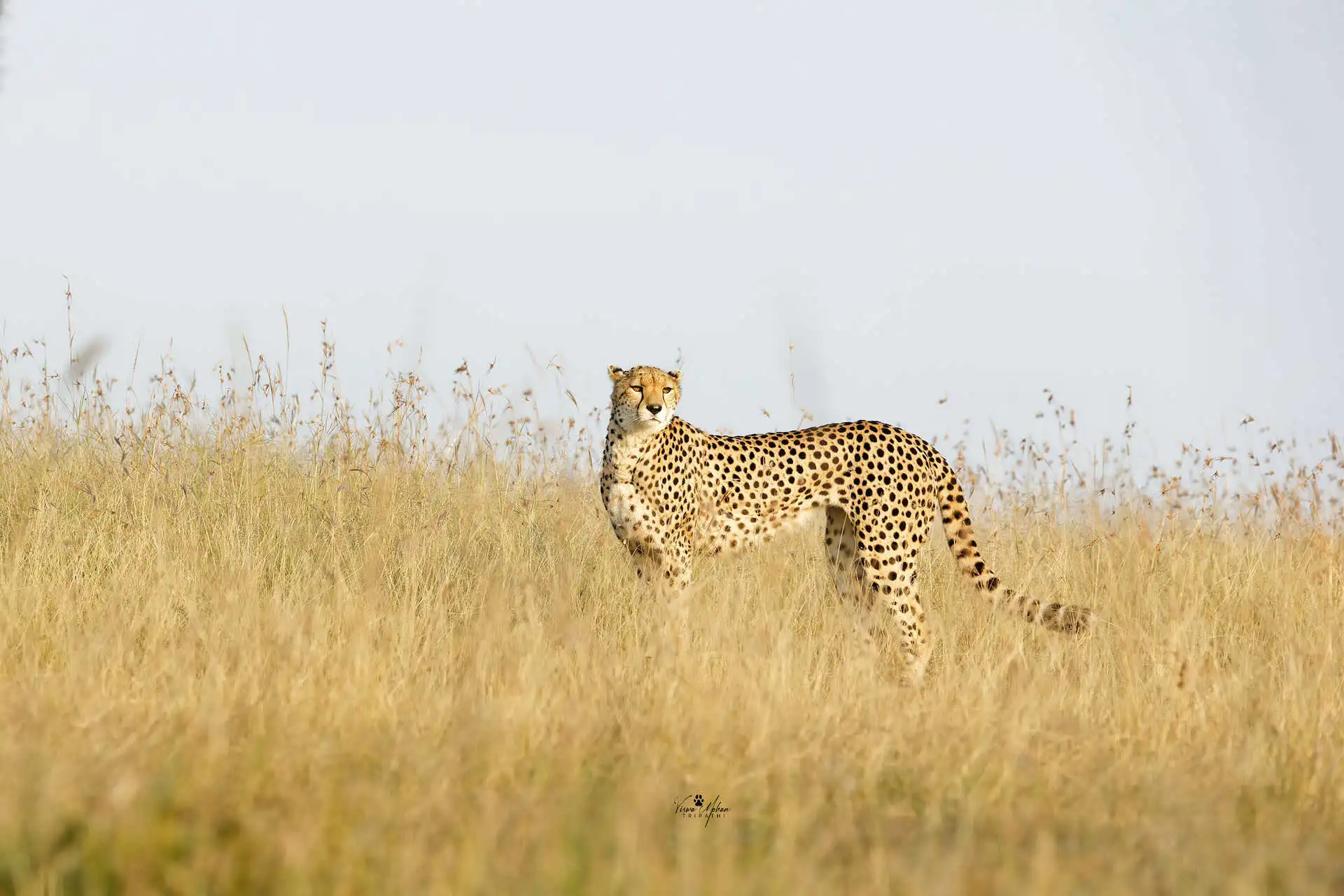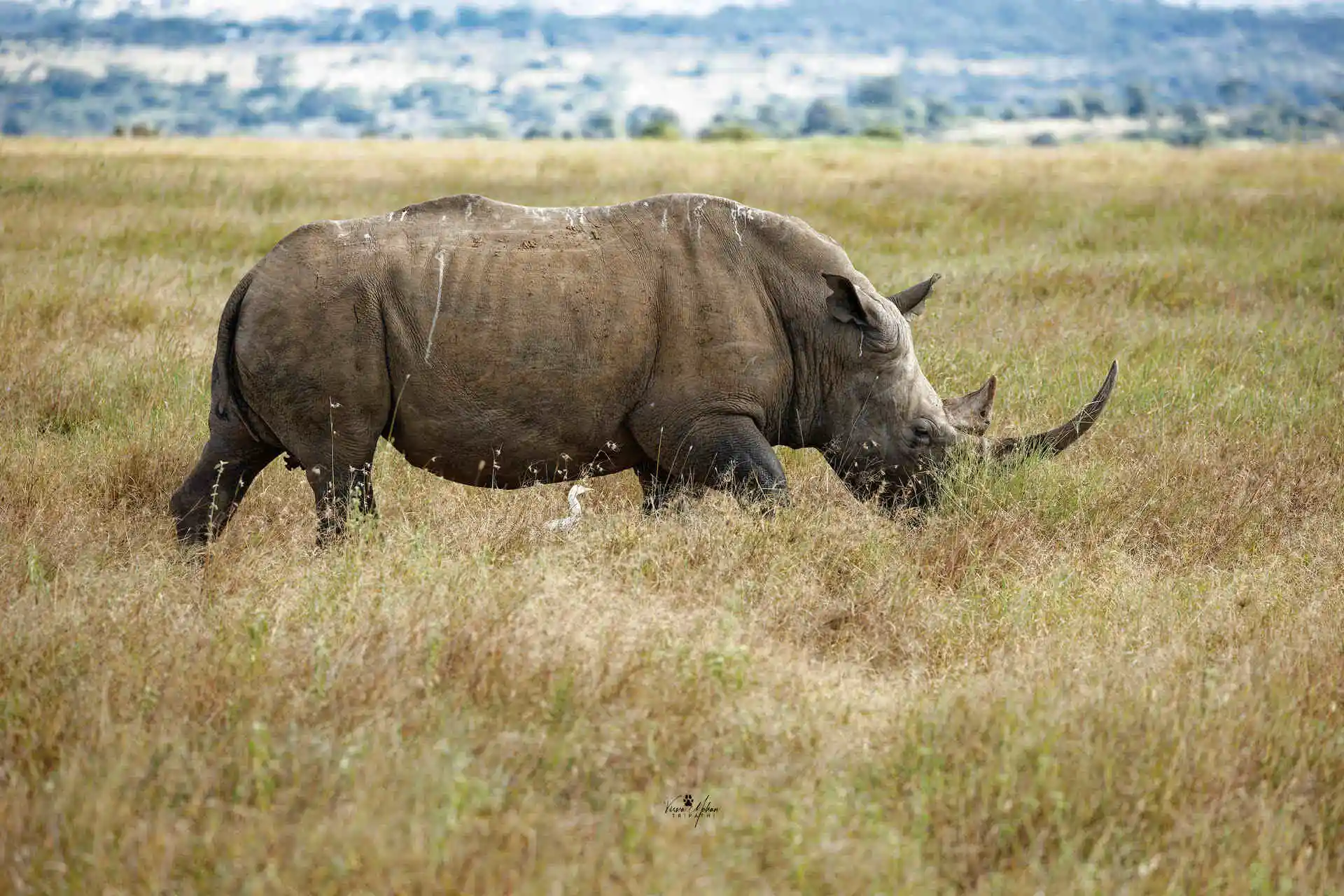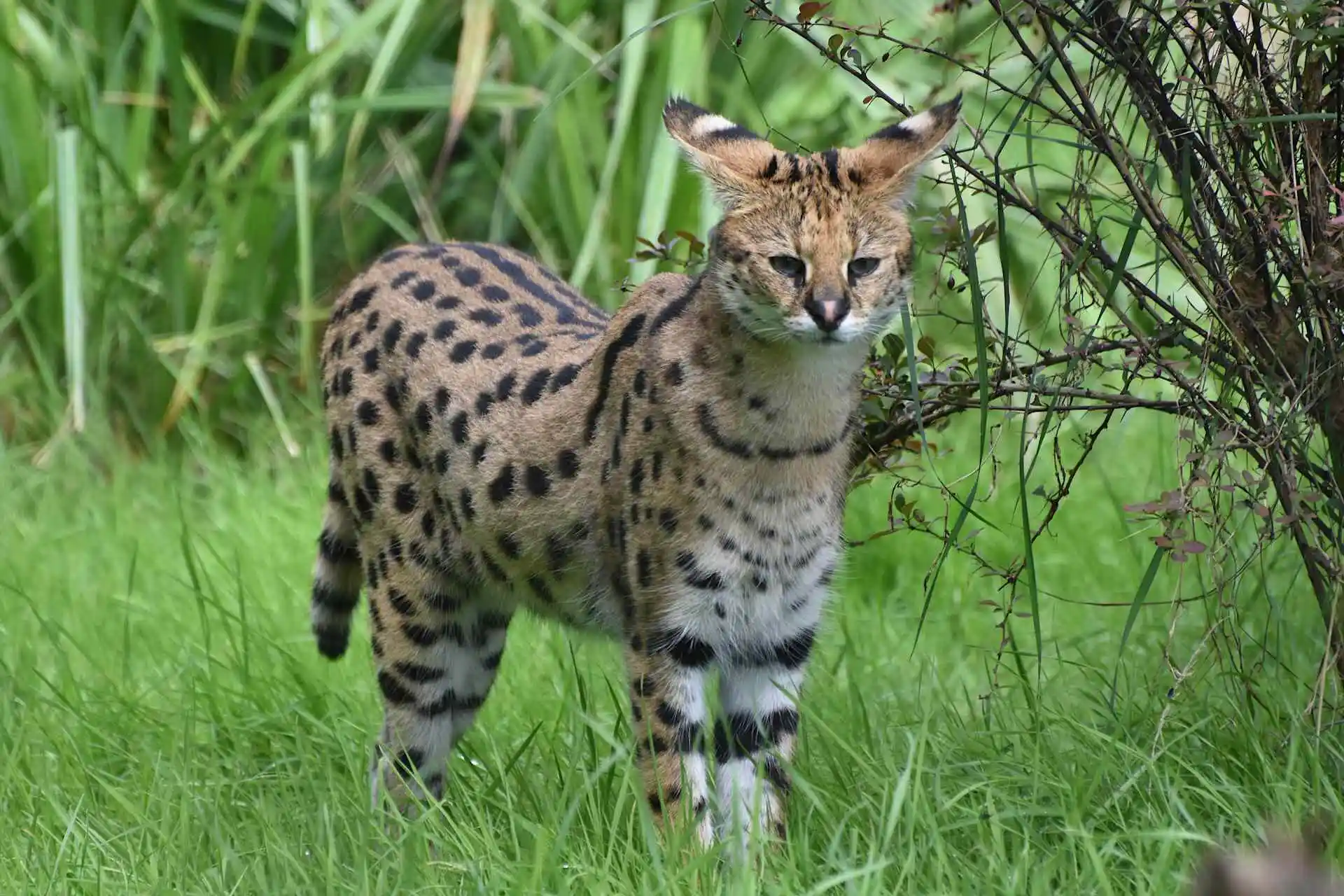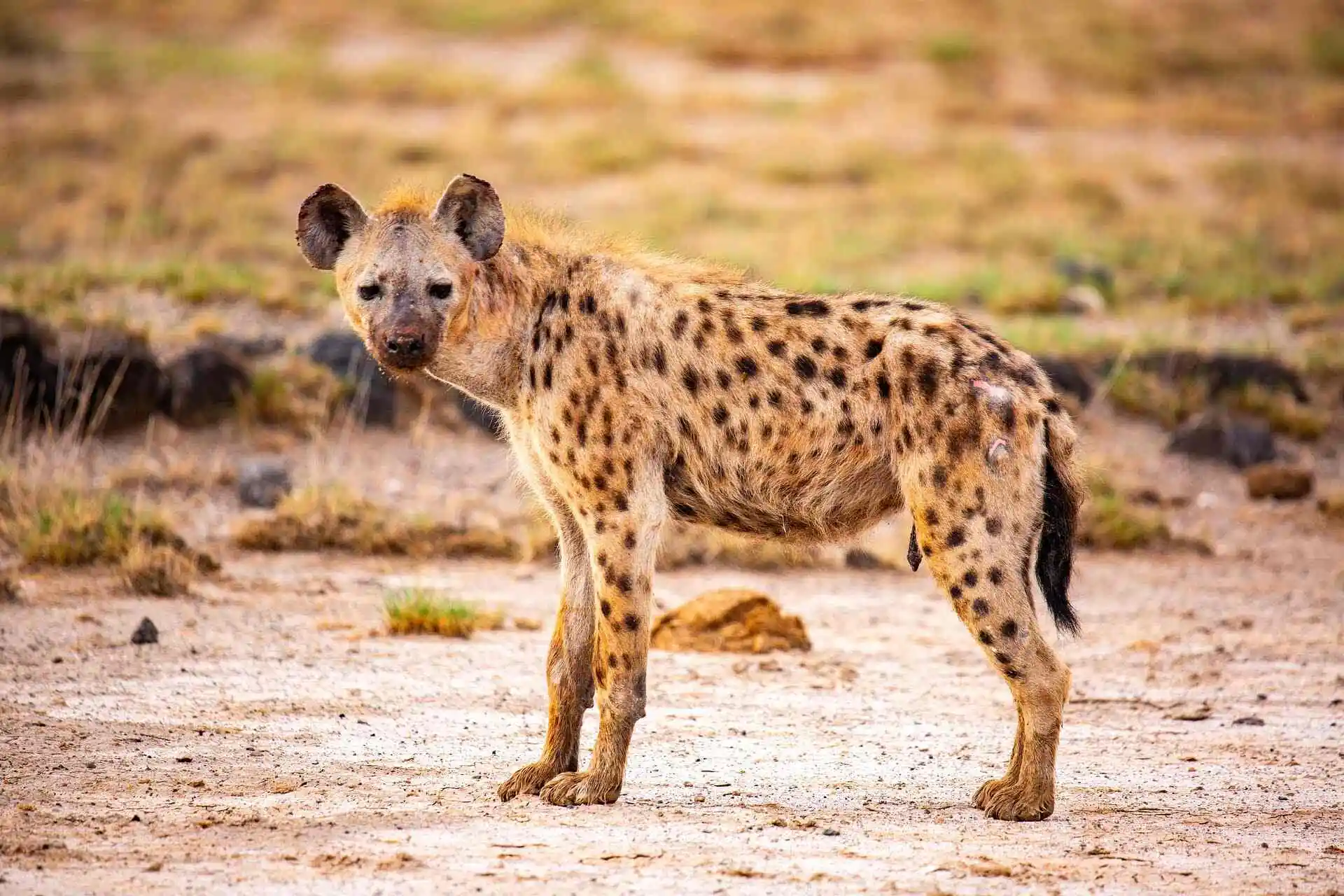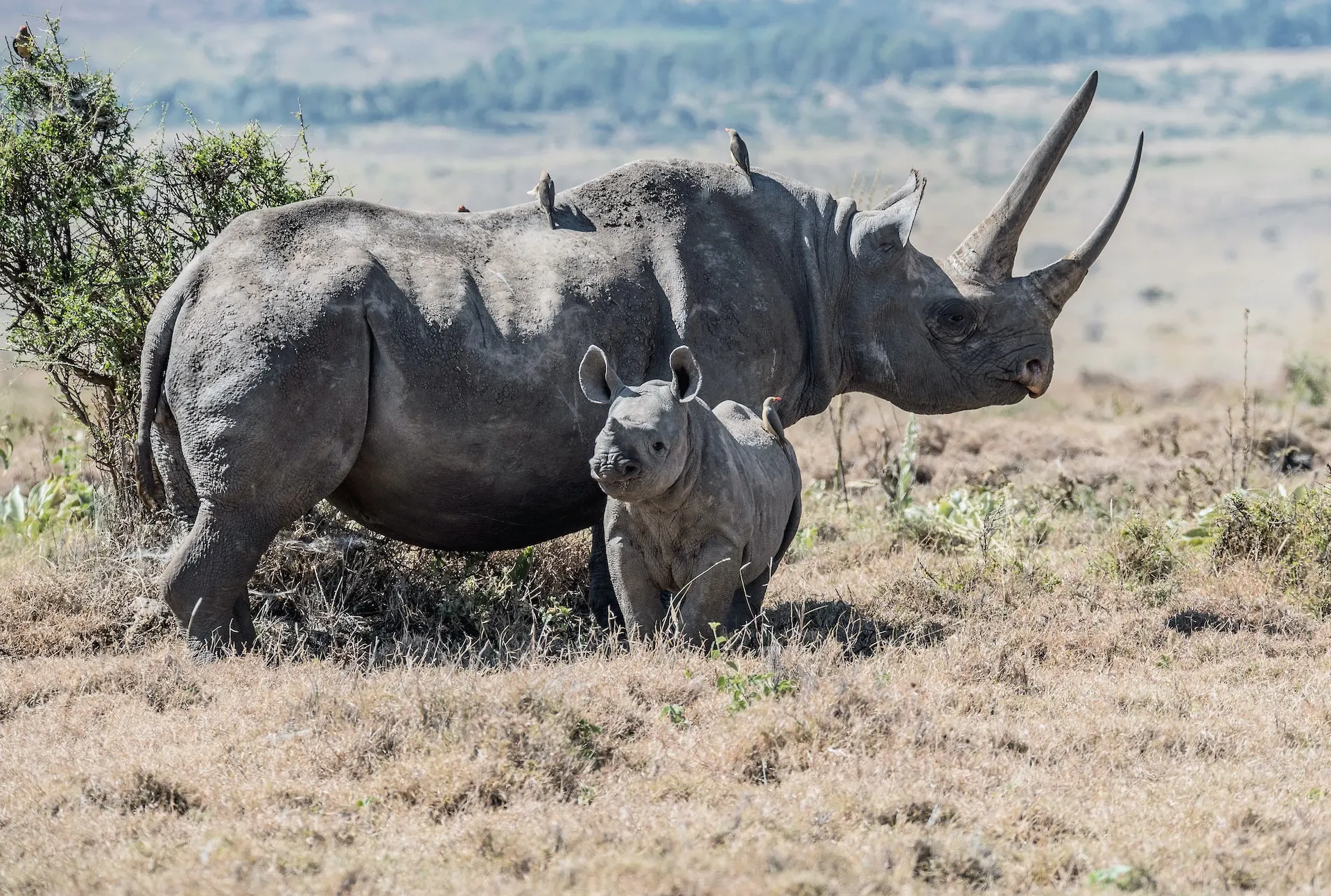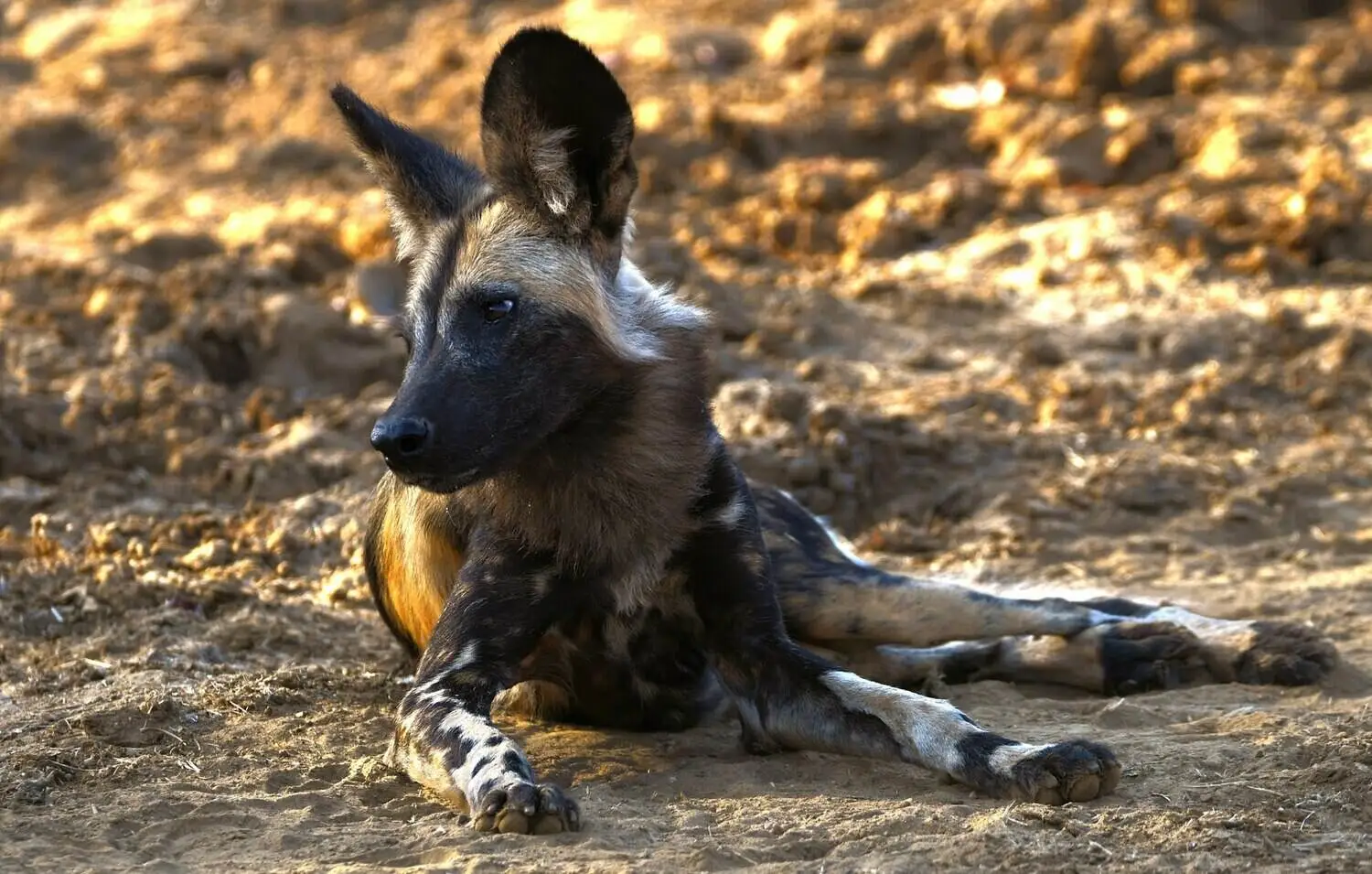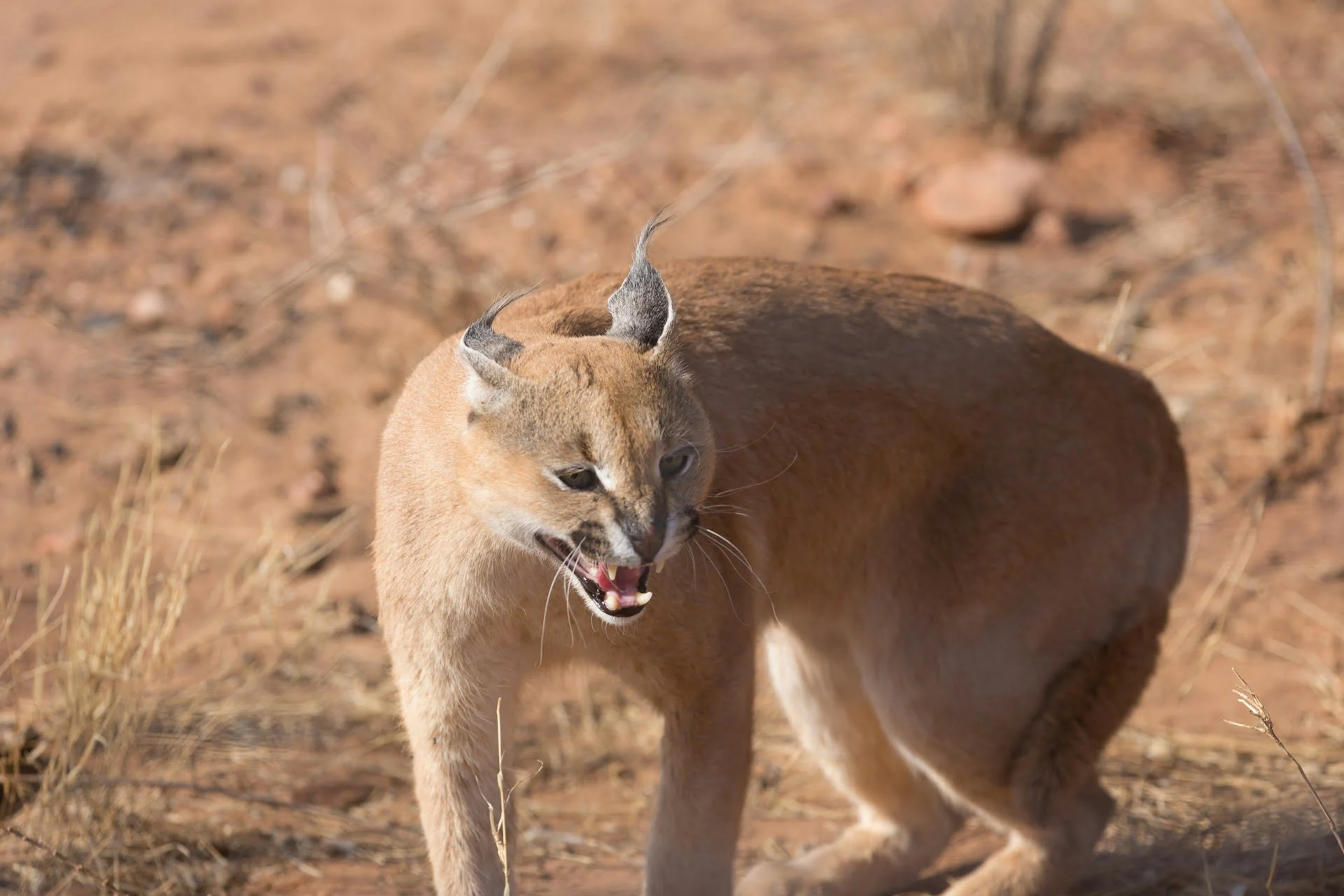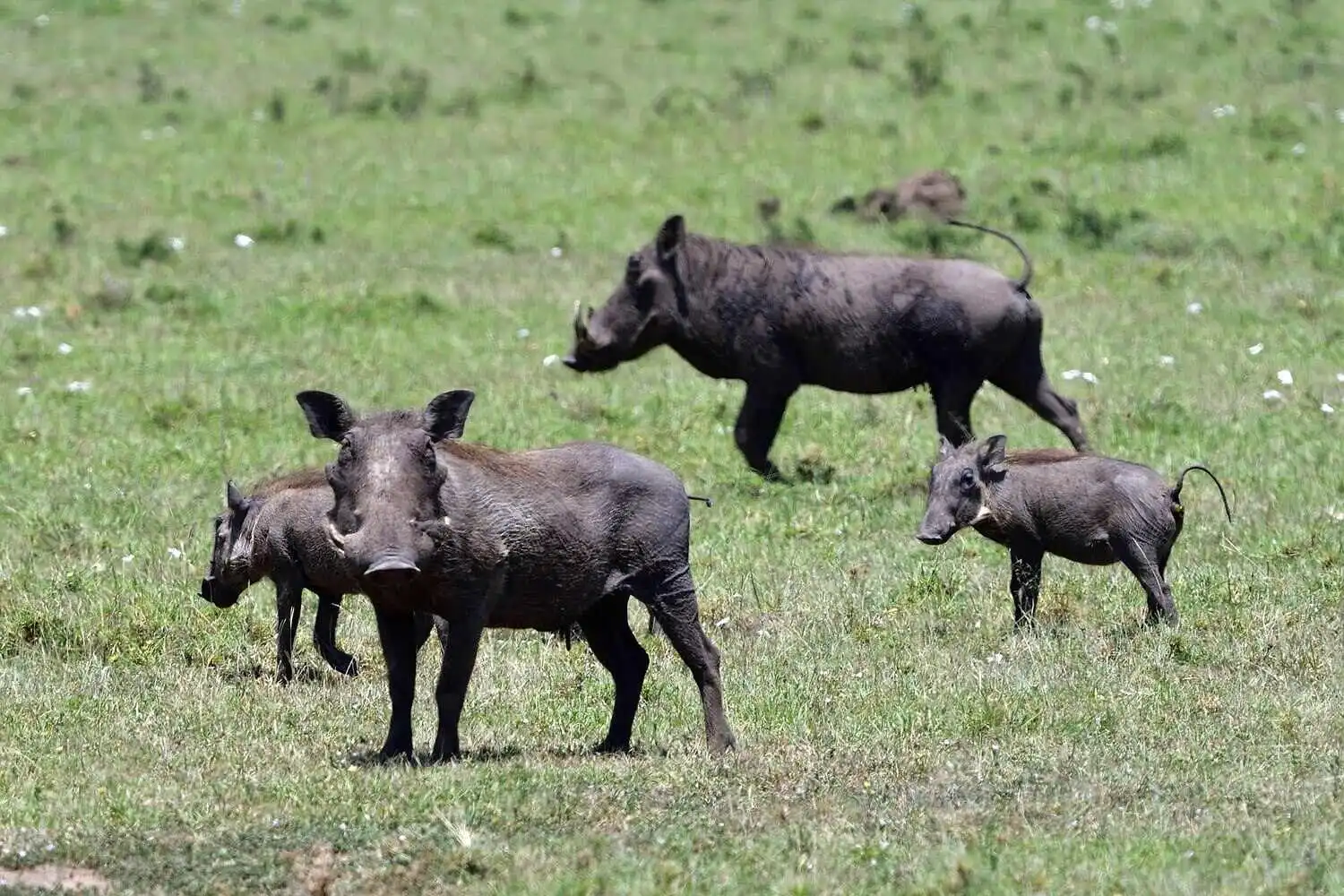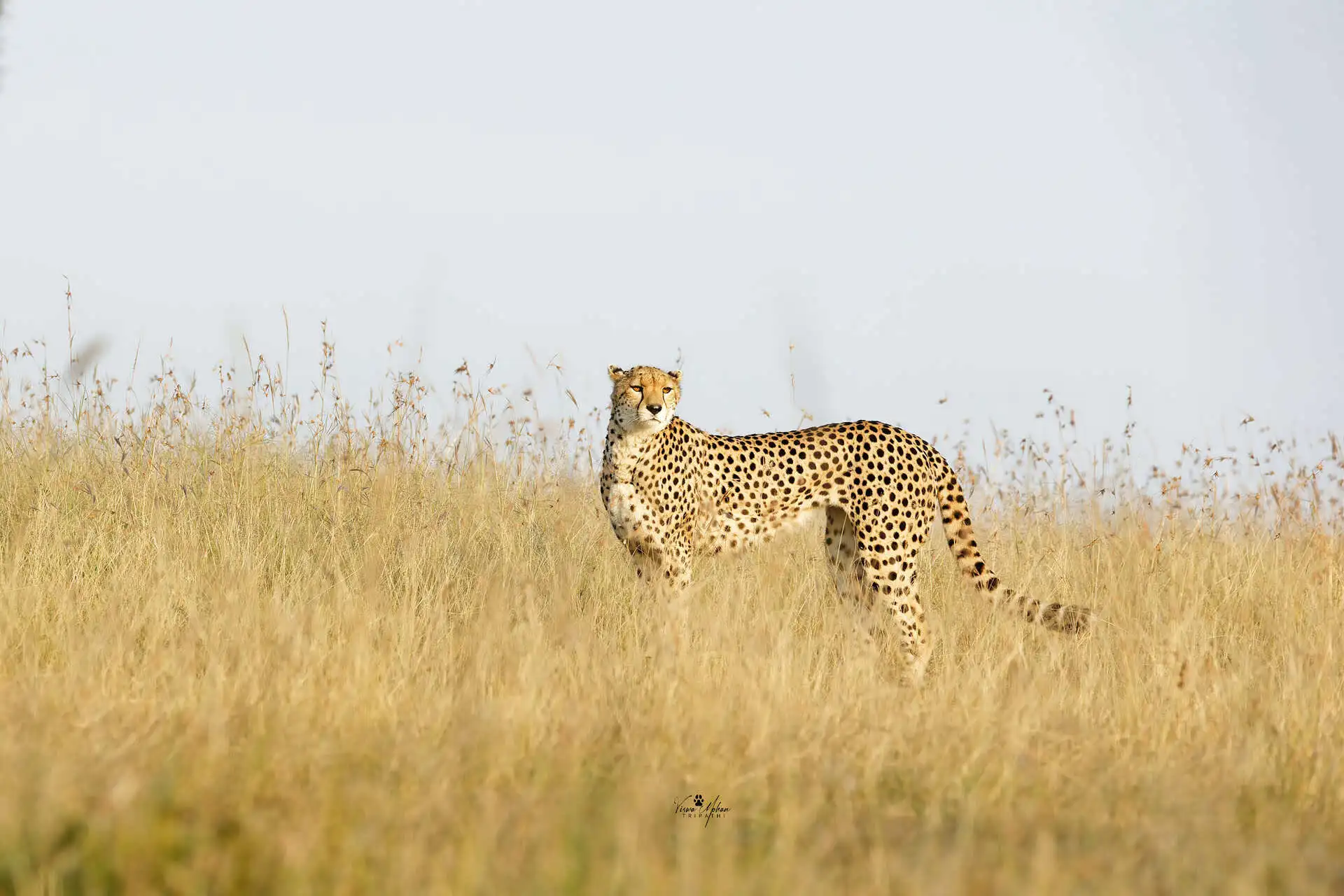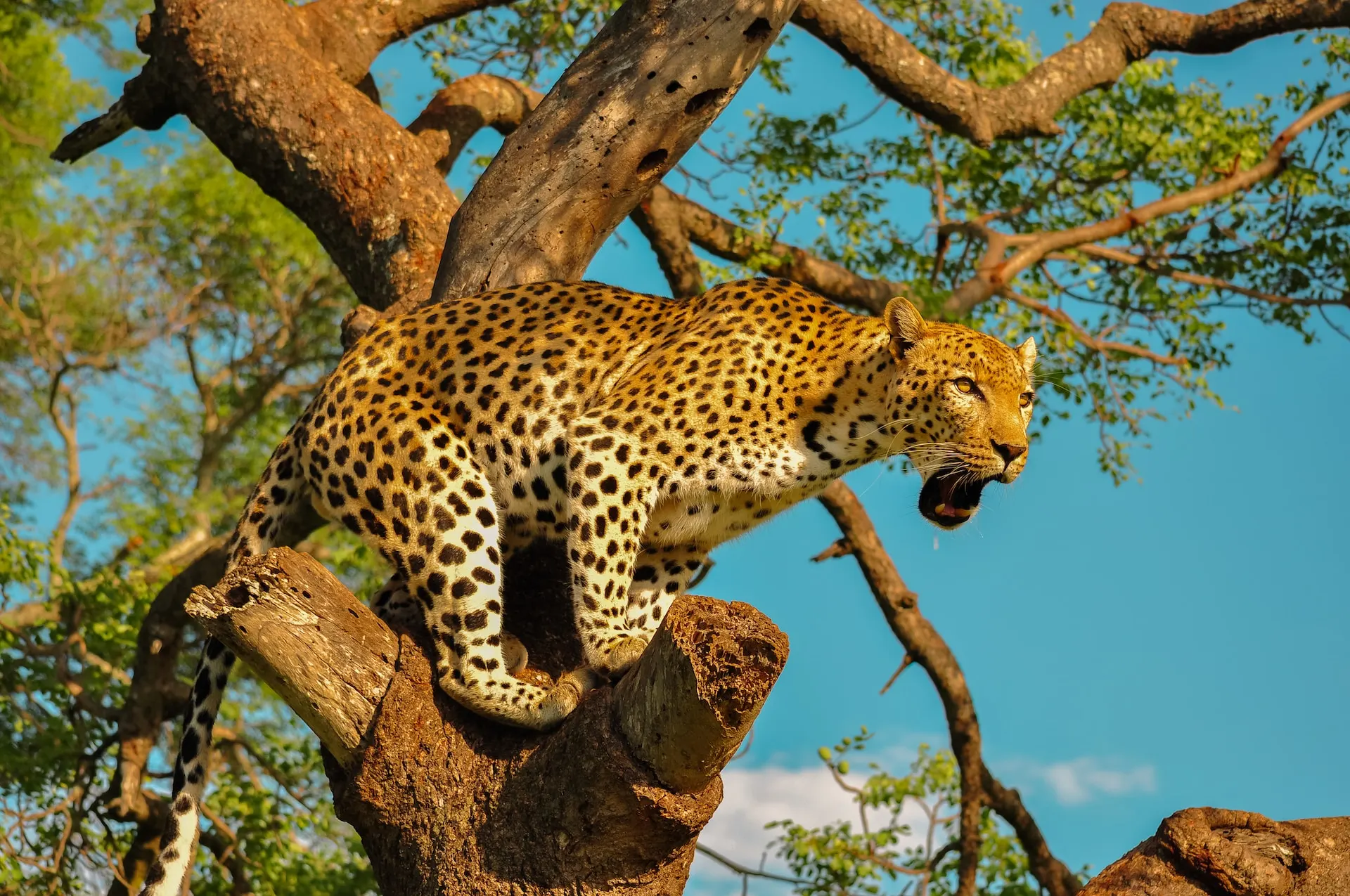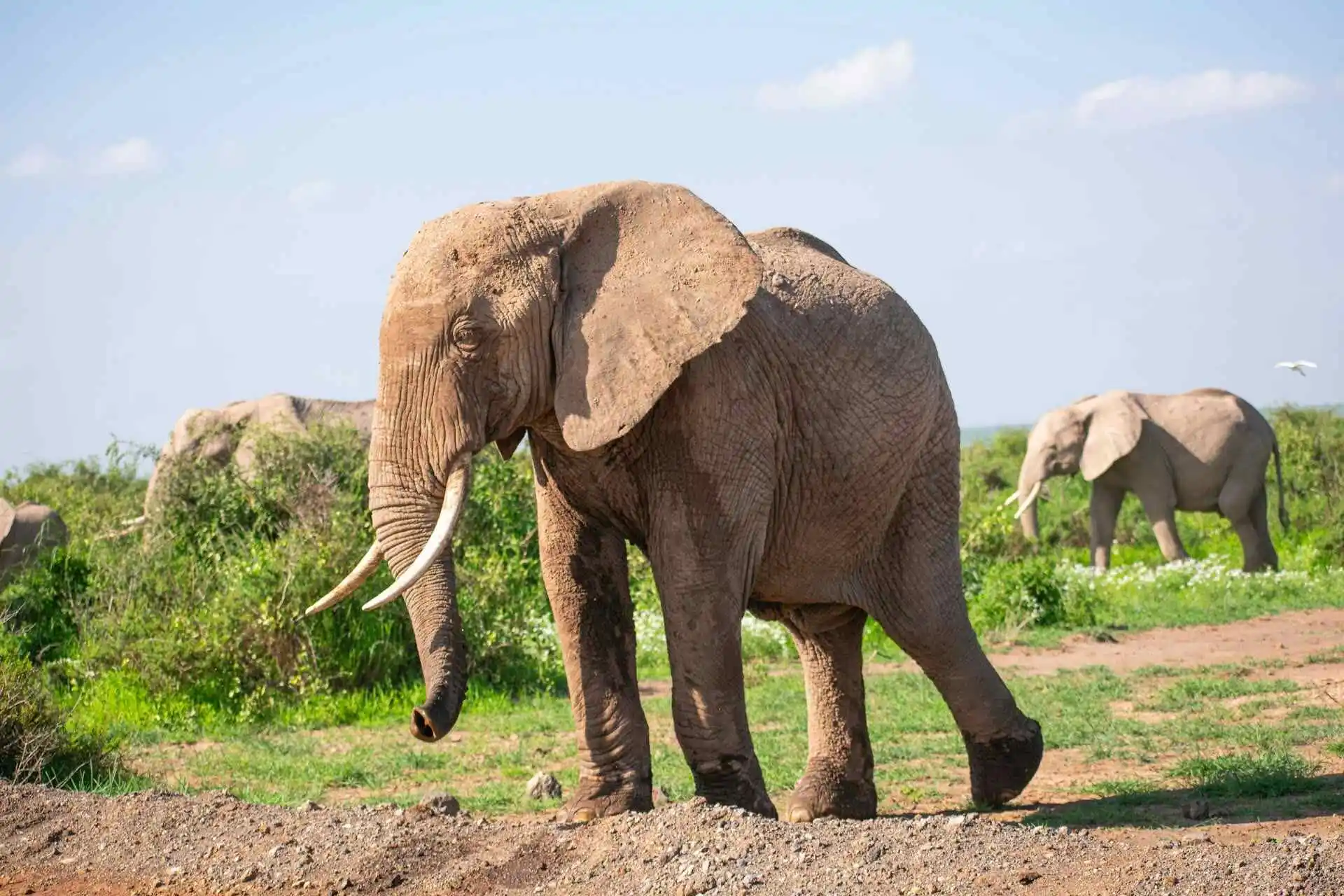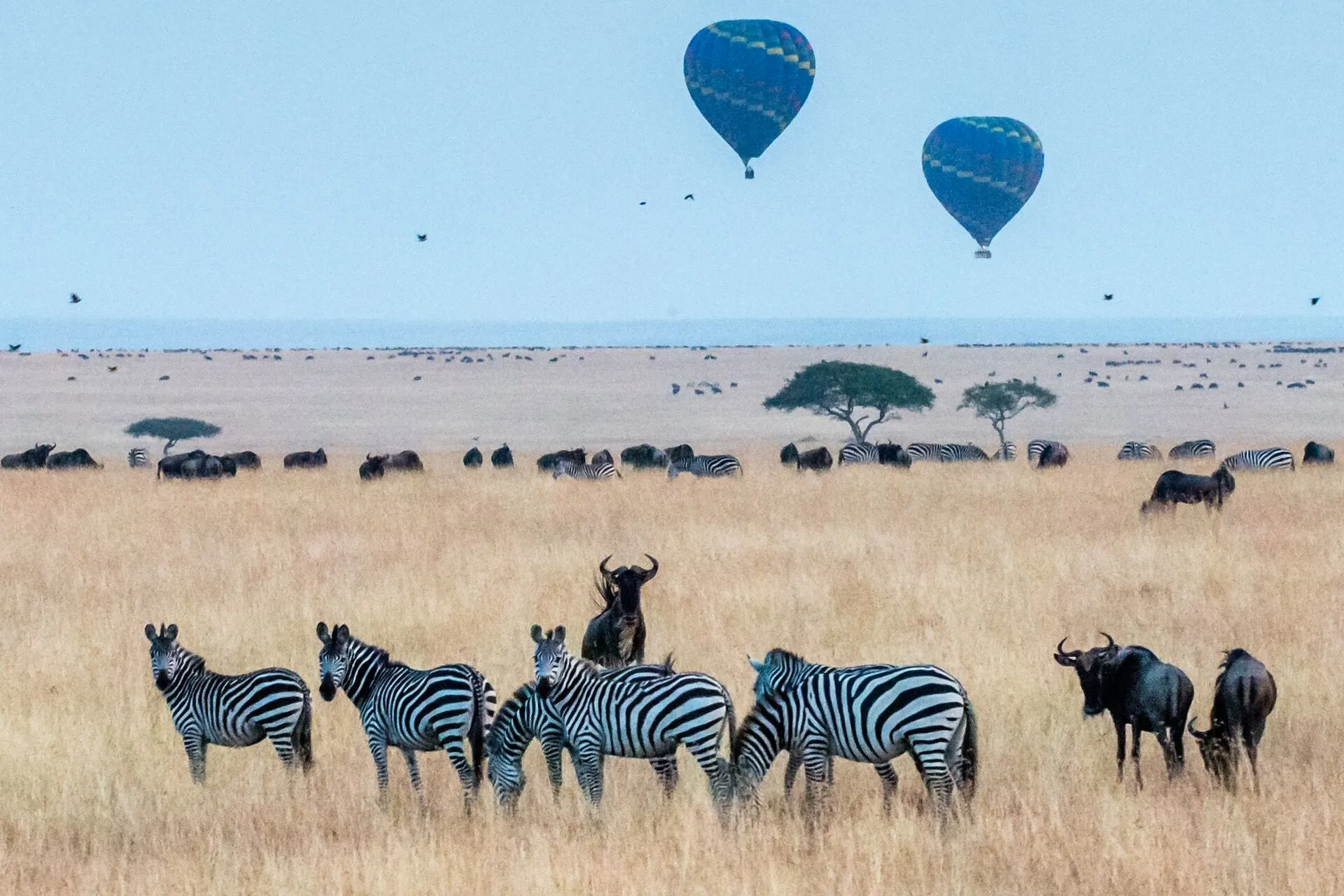Meet the Cape Buffalo
The Cape buffalo, also known as the African buffalo, is one of Africa’s toughest animals. They are big, bold, and often underestimated. This massive herbivore is built like a tank and full of attitude.
You will usually spot them with a dark brown to black coat, thick skin, and a heavy-set body with a hump over the shoulders. One of their most iconic features are the huge, curved horns that come together to form a helmet like shield.
Both the males and females have horns. But the males have bigger and thicker ones. Their broad faces, big ears, and wide-set eyes give them a serious, powerful appearance. And do not forget the tail, it ends with a cute little tuft of hair!
What Do Cape Buffalo Eat?
Cape buffalo are all about that grass life. They are herbivores that mainly graze on different kinds of grasses. These animals use their strong molars to chew through the tough stuff. But when the grass gets dry or runs low, they will switch it up and munch on leaves and shrubs too. They are not picky but just want a full belly. You will often find them near water. Not only do they drink a lot, but they also love rolling in mud and taking a dip. It cools them down and helps keep pesky bugs away.
Key Characteristics – Cape Buffalo
| Characteristics | Details |
|---|---|
| Life Span | 12-25 Years |
| Horn length | 1-1.6 Meters |
| Weight | 900-1800 KG |
| Shoulder Height | 1-1.7 Meter |
| Length | 1.7-3.4 Meter |
| Tail Length | 70-110 CM |
Why Cape Buffalo Matter in Africa?
Symbol of Power
In many African cultures, the Cape buffalo represents strength, bravery, and resilience. You will find them in traditional stories, music, art, and even ceremonies. Some tribes see them as a sign of abundance or fertility. Others view them as spiritual guardians of the land.
Part of Cultural History
For generations, local communities have relied on buffalo for meat, hides, and even tools made from their horns. In some areas, hunting a buffalo was considered a test of courage, a rite of passage into adulthood. Their skulls were sometimes decorated with beads or feathers as a mark of honour.
Cool and Wild Facts About Cape Buffalo
- Adult male Cape Buffalo develop a solid, helmet-like bone shield called a “boss” from the fused bases of their horns.
- They are notoriously unpredictable and have been known to ambush pursuers, earning them the nickname “widowmaker.”
- Cape Buffalo are highly social, living in large herds that can number over a thousand individuals for protection.
- When threatened, the herd will form a protective circle, with strong members facing outwards, and will come to the aid of a distressed buffalo.
- Older, solitary males, known as “Dagga Boys,” are often more aggressive due to being outcasts from breeding herds.
- They are pretty unforgiving; there are stories of them actually turning back to face hunters who’ve injured them.
- They frequently wallow in mud to regulate body temperature, protect their skin from sunburn, and deter parasites.
- As prolific grazers, Cape Buffalo play a crucial role in shaping their habitat by clearing coarse grasses, benefiting other herbivores.
- They share a symbiotic relationship with oxpecker birds, which eat parasites and act as an early warning system.
- Despite their large size, Cape Buffalo are surprisingly agile in water and are excellent swimmers.

